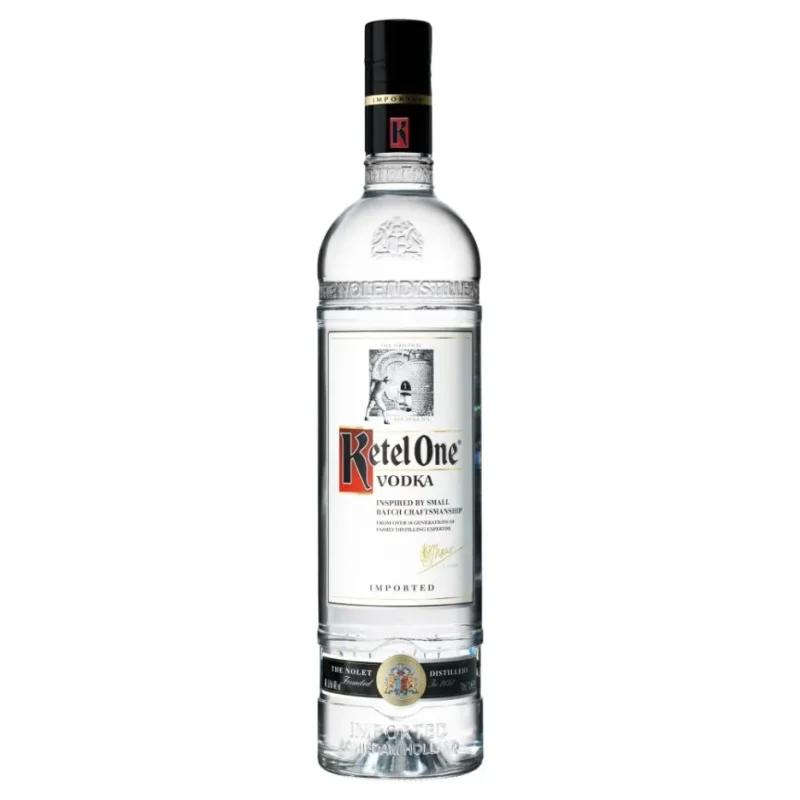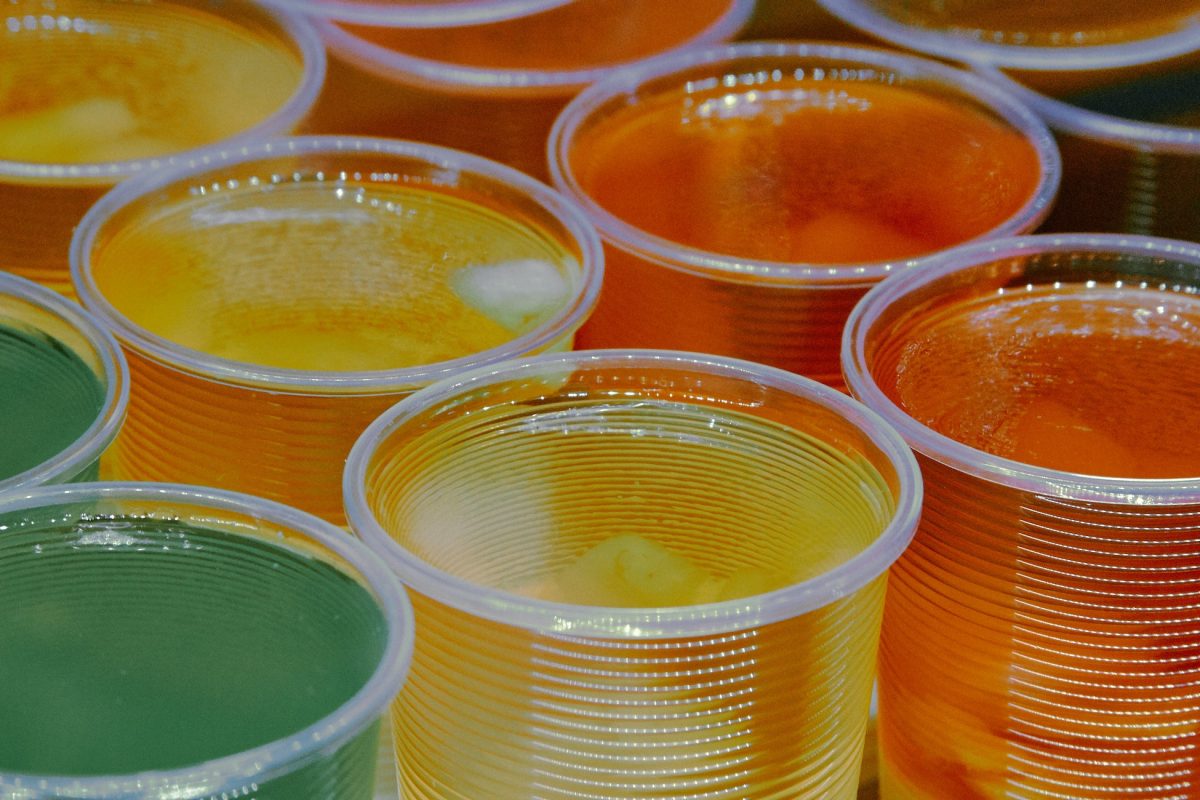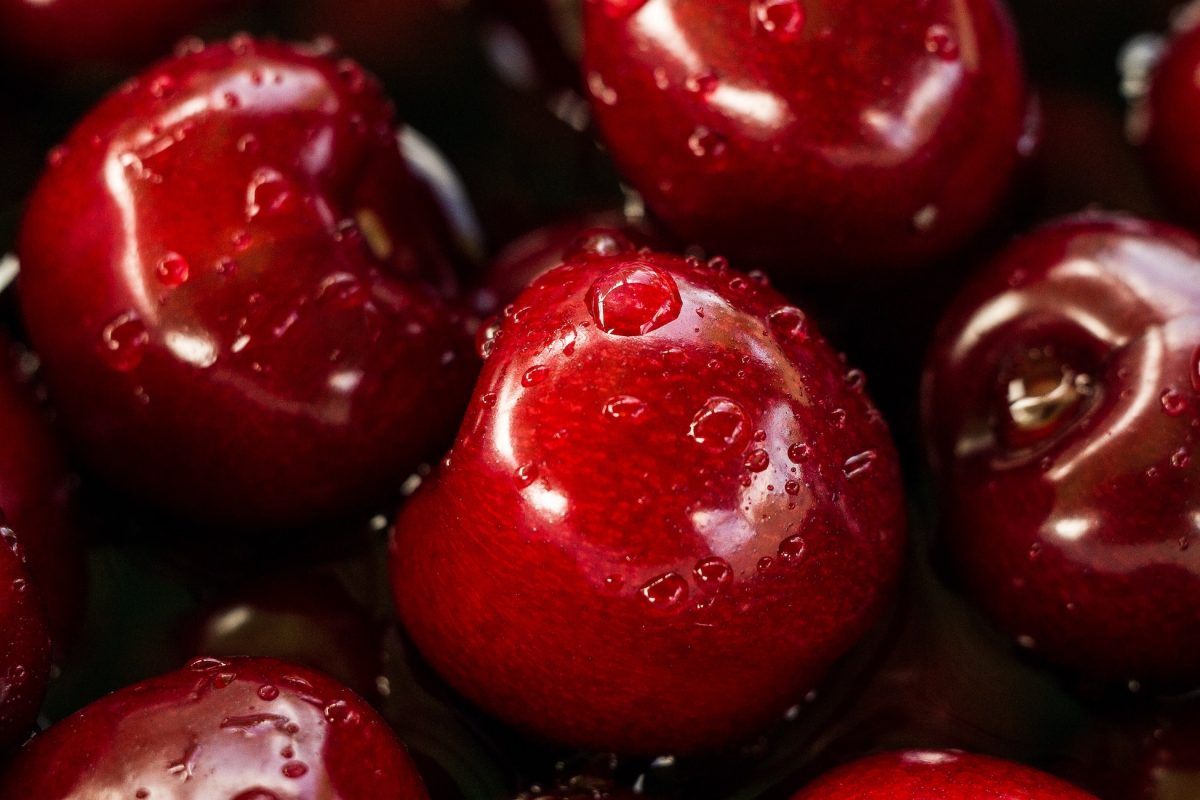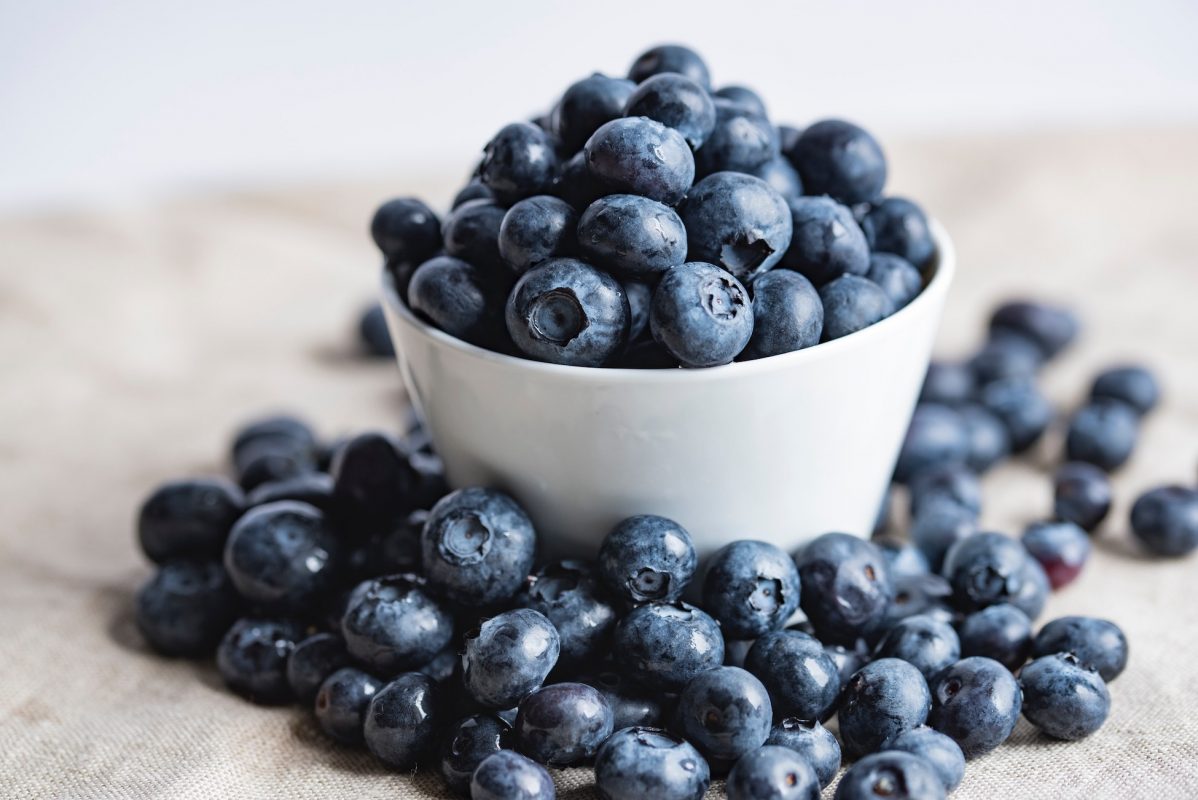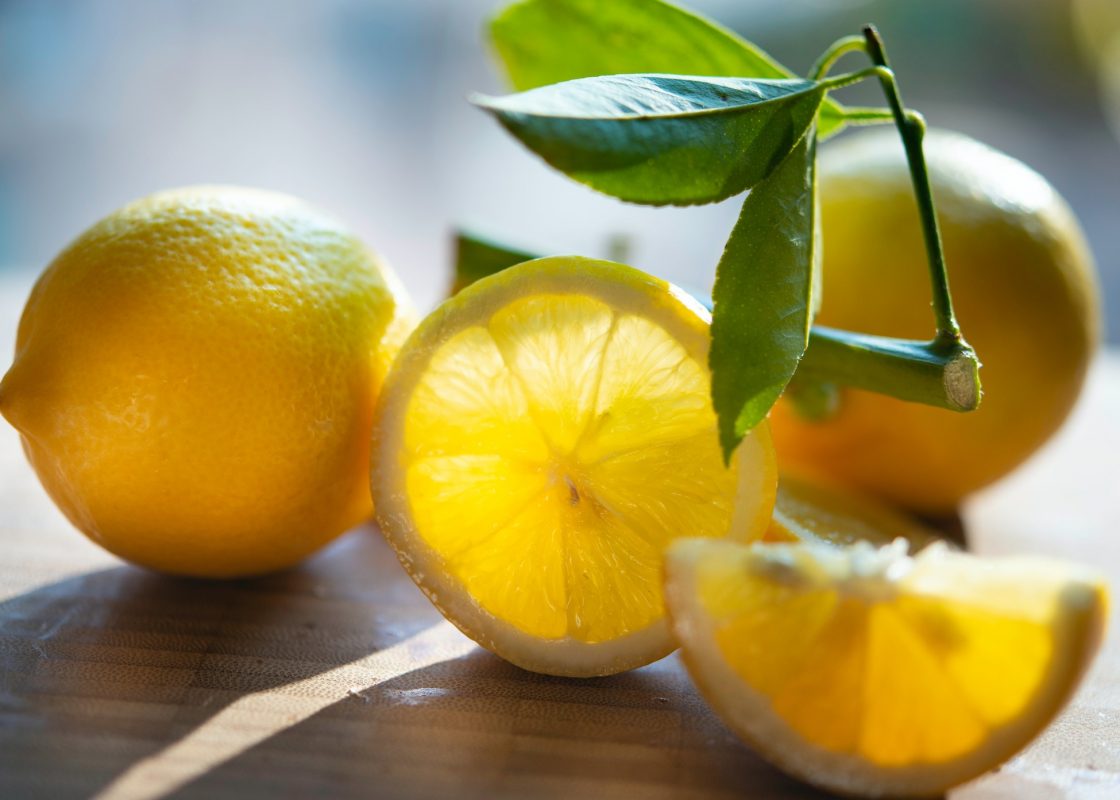Are you ready to dive into the spud-tacular world of potato vodka? Get ready to learn all about this unique and tasty spirit. From its humble beginnings as a poor man's drink to its rise as a top-shelf favorite, we've got the scoop on all things potato vodka. So grab a glass and let's get potato-tastic!
Best Budget Vodkas Ranked
Potato Vodka: Everything You Need to Know Table of Contents
What is The History of Potato Vodka?
What Does Potato Vodka Taste Like?
What Are The Top Potato Vodka Brands?
What Some Other Potato Vodka Brands?
What Are Some Alternatives To Potato Vodka?
What's the Difference Between Potato Vodka and Other Vodkas?
What Are The Advantages of Potato Vodka?
What Are The Disadvantages of Potato Vodka?
What Are Some Popular Cocktails That Use Potato Vodka?
What Can You Mix Potato Vodka With?
Potato Vodka and Food Pairings: A Symphony of Flavors
Potato Vodka in Cooking: Unlocking A World of Flavors
Potato Vodka Frequently Asked Questions
Looking For The Best Vodka? You'll Love These Vodka Guides...
What is Potato Vodka?
Potato vodka is a type of vodka that is made from, you guessed it, potatoes! It is usually produced in Poland, but it can also be found in other countries around the world. One thing that sets potato vodka apart from other types of vodka is its higher proof. This means that it has a higher alcohol content than other vodkas, which can give it a unique flavor profile.
But potato vodka isn't just known for its high proof - it is also considered to be one of the best vodkas for making cocktails. This is because potato vodka has a neutral flavor that allows the other ingredients in the cocktail to really shine. Plus, it mixes well with a variety of other ingredients, making it easy to create delicious cocktails with it.
If you're in the market for a high-quality potato vodka to use in your cocktails, Belvedere potato vodka is a great choice. It is made in Poland and is known for its clean flavor and versatility when it comes to mixing with other ingredients.
If you're looking for something a little bit different, Chopin potato vodka might be just what you're looking for. This Polish vodka is made from a single type of potato, giving it a unique flavor that sets it apart from other potato vodkas on the market.
When it comes to pairing potato vodka with food, it can be a bit of a challenge. However, there are certain dishes that work particularly well with it. One example is chicken Kiev, which pairs beautifully with the neutral flavor of potato vodka for a satisfying and delicious meal.
Potato vodka can also be used in desserts, such as chocolate mousse. The rich flavor of the chocolate pairs perfectly with the neutral flavor of the potato vodka, resulting in a decadent and indulgent dessert. So next time you're looking to add a little bit of vodka to your desserts, consider giving potato vodka a try!
Why is Potato Vodka Good?
First of all, potato vodka is known for its smoothness. This is because potatoes have very little flavor of their own, so they don't interfere with the taste of the vodka. So, if you're someone who doesn't love the taste of alcohol but still wants to enjoy a cocktail, potato vodka is perfect for you.
In addition to its smoothness, potato vodka also has a higher alcohol content than other types of vodka. This means that you can get tipsy (or even drunk) faster on potato vodka, which is always a plus in our book. Just make sure to drink responsibly and always have a designated driver!
But the benefits of potato vodka don't stop there. It's also said to be easier on your stomach than other types of alcohol. This is because potatoes are easier to digest than grain or fruit-based alcohols, so you won't have to worry about any unpleasant side effects the morning after.
And let's not forget about the taste! Potato vodka is delicious and has a unique flavor that sets it apart from other vodkas on the market. So, if you're looking for a tasty way to get your drink on, give potato vodka a try. Your taste buds (and stomach) will thank you.
How is Potato Vodka Made?
Potato vodka is made through a process similar to that of grain vodka, but with one key difference: potatoes are used instead of grains. After the potatoes are harvested, they are cleaned and then mashed into a pulp. Yeast is added to the mash and it is left to ferment for a few days.
Once the fermentation process is complete, the resulting potato beer is distilled to create the vodka. This can be done using either a pot still or a column still. After distillation, the potato vodka can be bottled and enjoyed. Some brands may add additional ingredients or flavors at this stage, but many choose to keep their potato vodka simple and pure.
The production process for potato vodka may vary slightly from brand to brand, but the basic steps are the same. The end result is a smooth and unique vodka with a higher alcohol content than many other types of vodka.
What is The History of Potato Vodka?
Potato vodka has a rich and storied history that dates back hundreds of years. In fact, potato vodka was probably one of the first types of vodka ever made!
In the 14th century, vodka was first produced in Poland, and it was made from potatoes. At the time, potatoes were a new and exotic ingredient that had just been introduced to Europe from South America. The Polish people were fascinated by this strange new crop, and they started experimenting with using it to make alcohol.
The first potato vodkas were probably pretty rough, but as time went on, the production process became more refined. By the 16th century, potato vodka had become a popular drink in Poland, and it was being exported to other countries as well.
In the 17th and 18th centuries, potato vodka became even more popular as it was introduced to Russia and other parts of Eastern Europe. By this time, potato vodka was being made using more advanced techniques, and it was becoming increasingly smooth and refined.
Today, potato vodka is still a popular drink, and it is made in many countries around the world. It is especially popular in Poland and Russia, where it has a long and storied history.
If you're a fan of potato vodka, then you should be sure to raise a glass and toast to its rich history. Whether you enjoy it neat, on the rocks, or mixed in a cocktail, potato vodka is a truly timeless spirit that is sure to please!
What Does Potato Vodka Taste Like?
So, you're thinking about trying potato vodka for the first time? Congrats! You're about to embark on a flavor journey unlike any other.
But what exactly does potato vodka taste like? Well, it's tough to put into words, but we'll give it a shot.
First off, it's important to note that potato vodka tends to be smoother and silkier than other types of vodka. This is because potatoes have less flavor than grains like wheat or rye, so they don't interfere with the taste of the vodka as much.
So, what does that smooth, silky flavor actually taste like? Some people describe it as earthy or slightly sweet, with hints of vanilla and citrus. Others say it tastes like freshly baked potatoes (without the butter and sour cream, of course).
One thing that's for sure is that potato vodka has a unique flavor that sets it apart from other vodkas. If you're a fan of vodka with a more subtle, refined taste, potato vodka might be right up your alley.
But don't just take our word for it - the only way to truly understand what potato vodka tastes like is to try it for yourself! So go ahead, pour yourself a shot and let those taste buds do the talking.
What Are The Top Potato Vodka Brands?
One brand that stands above other is Chopin Potato Vodka.
Named after Poland's famous composer Frederic Chopin, Chopin Potato Vodka is handcrafted in small batches, using locally sourced, high-starch potatoes. It is distilled four times and left unfiltered to preserve the unique character of the potatoes, which results in a rich, full-bodied vodka with a creamy texture. The distillery's commitment to quality and their meticulous production process have garnered Chopin a reputation for premium potato vodka.
It is celebrated for its distinct flavor profile, which offers a subtle sweetness and a smooth finish, with hints of apple, vanilla, and earthy notes. Its creamy texture makes it enjoyable to sip neat or on the rocks, and it also performs exceptionally well in cocktails, providing a robust and flavorful base.
Best Potato Vodkas Ranked
Average US Price: $25 - Drizly
Average UK Price: £10 - Masters of Malt
Average EU Price: €42 - Grau Online
Average US Price: $35 - Drizly
Average UK Price: £38 - Masters of Malt
Average EU Price: €47 - Grau Online
Average US Price: $16 - Drizly
Average UK Price: £20 - Masters of Malt
Average EU Price: €13 - Grau Online
What Some Other Potato Vodka Brands?
If you're looking to explore the universe of potato vodka's here are some other brand you should try:
What Are Some Alternatives To Potato Vodka?
If potato vodka isn't your thing, there are plenty of other options out there. Wheat vodkas are a popular alternative, as they tend to be smoother and have a more neutral flavor.
Other grains like rye and barley can also be used to make vodka, and each will impart its own unique flavor profile.
If you're looking for something truly unique, you can even find vodkas made from fruits or vegetables like grapes, apples, or carrots. No matter what your preference is, there's sure to be a vodka out there that's perfect for you.
What's the Difference Between Potato Vodka and Other Vodkas?
Potato vodka is made from, you guessed it, potatoes. Most other vodkas are made from grains like wheat or corn. The potato gives the vodka a more robust flavor that some say is earthier and sweeter than other vodkas.
Potato vodka is also said to be smoother than its grain-based counterparts. This is because the potato starch breaks down more easily during the distilling process, resulting in a final product with fewer impurities.
So if you're looking for a bolder, smoother vodka experience, potato vodka may be the way to go.
What Are The Advantages of Potato Vodka?
There are several advantages to potato vodka.
First, potato vodka is gluten-free, so it's a great option for people with celiac disease or gluten sensitivities.
Second, potato vodka is generally considered to be smoother and more mellow than other types of vodka.
This makes it a great choice for sipping neat or using in cocktails. Finally, potato vodka tends to be slightly less expensive than other premium vodkas.
So, if you're looking for a delicious, gluten-free option that won't break the bank, potato vodka is a great choice.
What Are The Disadvantages of Potato Vodka?
While there are some advantages to potato vodka, there are also some disadvantages.
First, potato vodka can be harder to find than other types of vodka.
Second, potato vodka doesn't always have the same "kick" as other vodkas. This can be a good or bad thing, depending on your preferences.
Finally, potato vodka can sometimes taste a bit earthy or dirt-like. Again, this is a matter of personal preference.
So, if you're looking for a unique vodka that might be hard to find and has a mellower flavor profile, potato vodka is a good option.
However, if you're looking for a traditional "kick," you might want to try another type of vodka.
What Are Some Popular Cocktails That Use Potato Vodka?
There are plenty of recipes for cocktails that use potato vodka. Some popular ones include the Moscow Mule, Bloody Mary, and Cosmopolitan. Here are the recipes for each:
Moscow Mule
Combine equal parts potato vodka, lime juice, and ginger beer in a copper mug filled with ice. Garnish with a lime wedge.
Bloody Mary
Fill a glass with ice and add one shot (or more, depending on your preference) of potato vodka. Add tomato juice and various seasonings to taste. Garnish with celery, olives, or whatever you like in your Bloody Marys!
Cosmopolitan
In a shaker filled with ice, combine one shot potato vodka, half a shot triple sec, half a shot cranberry juice, and a squeeze of fresh lime juice. Shake well and strain into a chilled martini glass. Garnish with a lime wedge.
As you can see, potato vodka can be used in all sorts of cocktails, not just Moscow Mules! So get creative and experiment with your own favorite recipes.
Is Potato Vodka Vegan?
Potato vodka is technically vegan, as it is made from potato starch. However, some potato vodkas may use animal products in the filtration process. Be sure to check with the manufacturer if you are concerned about this.
Is Potato Vodka Gluten Free?
Yes, potato vodka is gluten free because it doesn't contain any wheat or other grains. This makes it a great choice for people with celiac disease or who are sensitive to gluten.
What Can You Mix Potato Vodka With?
Potato vodka is a versatile liquor that can be used in a variety of cocktails. Some of our favorite potato vodka recipes include the classic martini, cosmopolitan, and Kamikaze. potato vodka also makes a great Bloody Mary!
If you're looking for something a little different, try making a potato vodka lemonade or potato vodka cranberry juice. You can also use it to make homemade potato chips! Simply soak thinly sliced potatoes in potato vodka for about 30 minutes, then bake at 400 degrees until golden brown.
Potato Vodka and Food Pairings: A Symphony of Flavors
Are you a vodka enthusiast, always on the hunt for the perfect accompaniment to your favorite potato vodka? Or perhaps you're hosting a party and want to impress your guests with exquisite food and drink combinations? Maybe you're simply curious about the potential pairings for that bottle of potato vodka you have on your bar cart. Whatever your motivations may be, we're here to help you understand the art of pairing potato vodka with food, and to assure you that this journey is as delightful as it is enlightening. So, let's get started.
As we embark on this epicurean adventure, it's crucial to understand the fundamental profile of potato vodka. Unlike grain vodka, potato vodka boasts a smooth, slightly creamy, and full-bodied texture, with an understated sweetness and earthy undertones. It's these unique characteristics that guide us towards harmonious food pairings.
1. Seafood
Seafood is a classic pairing for potato vodka. The clean, fresh flavors of fish and seafood can complement the earthiness of the potato vodka beautifully. Consider pairing your vodka with sushi, oysters, shrimp cocktail, or even a delicate fish ceviche. In the cold winter months, a seafood chowder paired with potato vodka can also be a heart-warming option.
2. Cured Meats
The rich, savory flavors of cured meats like prosciutto, salami, and smoked sausages can serve as an excellent counterpoint to the smooth, slightly sweet profile of potato vodka. For an exciting and fun pairing, try creating a charcuterie board with a selection of cured meats, cheeses, olives, and fresh fruits. The varying flavors will create an exciting flavor carousel when accompanied by the vodka.
3. Pickled Vegetables
In Russia and other Eastern European countries, vodka is traditionally enjoyed with pickles. The tart, vinegary crunch of pickled cucumbers, beets, or even cabbage (think sauerkraut) can cut through the richness of potato vodka and prepare your palate for the next sip. For a simple yet effective pairing, serve a chilled shot of potato vodka with a side of pickles at your next gathering.
4. Creamy Cheeses
The creaminess of potato vodka pairs beautifully with creamy, rich cheeses. Brie, Camembert, or even cream cheese spread on a crusty baguette can make for a delightful pairing. If you're planning a brunch, a potato vodka Bloody Mary served alongside a bagel with cream cheese and smoked salmon can be a real treat.
5. Spicy Foods
Spicy foods, like Mexican or Thai cuisine, can harmonize wonderfully with potato vodka. The creamy, smooth nature of potato vodka can help soothe the fiery heat of chilies, creating a satisfying balance. Think spicy chicken tacos, spicy basil stir fry, or even a hot curry.
Remember, pairing food and vodka is subjective and relies heavily on personal preferences. What might work for one person might not work for another, so we encourage you to use these guidelines as a starting point and not an absolute rulebook. Experiment with different pairings, take notes on what you liked or didn't like, and don't be afraid to think outside the box. The most important thing is that you enjoy the process and, of course, your potato vodka.
Lastly, no matter what you pair your potato vodka with, always ensure the vodka is served at the right temperature. Ideally, potato vodka should be served chilled, but not over-diluted with ice. This helps mellow out the alcohol, while still preserving the vodka's unique character. If you're pairing the vodka with hot dishes, the contrast between the cold vodka and warm food can also make for an exhilarating sensory experience.
To sum up, vodka and food pairing is an art as much as it is a science. The smoothness, subtle sweetness, and earthy notes of potato vodka make it versatile for various pairings, from seafood and cured meats to pickled vegetables, creamy cheeses, and even spicy foods. As with all gastronomic adventures, keep an open mind, trust your palate, and most importantly, enjoy the journey!
Potato Vodka in Cooking: Unlocking A World of Flavors
Vodka, more than just an accompaniment to a fun night out, or a companion to a calming evening in, is a diverse and intriguing ingredient in the culinary world. When it comes to cooking, potato vodka, with its smooth, full-bodied, and subtly sweet profile, can open up an exciting, unexplored territory in your kitchen. But, how does one cook with potato vodka? And, more importantly, why should one cook with it? Let's embark on this culinary voyage to discover the potential of potato vodka in cooking.
Before we delve into specific recipes, let's clear up some misconceptions. Cooking with vodka does not mean you're trying to infuse every dish with alcohol or striving for a boozy dinner. When used properly, potato vodka, like any other ingredient, plays its role in creating a balanced and complex flavor profile in the dish.
Why Cook with Potato Vodka?
First, let's talk about why we even use potato vodka in cooking. The alcohol in vodka can act as a fantastic medium for flavors. Many aromatic compounds in food are alcohol-soluble, which means they will only release their full range of flavors when in contact with alcohol. Thus, adding a splash of potato vodka can help unlock these hidden flavors and aromas, elevating your dish to another level.
Moreover, the slightly sweet and earthy flavors of potato vodka can lend a unique depth to a variety of dishes. From savory sauces to desserts, this versatile spirit can be a secret weapon in your culinary arsenal.
Vodka in Savory Dishes
One of the most classic recipes that showcase vodka is Penne alla Vodka - an Italian-American pasta dish with a creamy, tomato-based, and vodka-infused sauce. Here, the vodka helps to release the flavors from the tomatoes and binds the cream and tomatoes together to create a harmonious, rich, and delectable sauce.
The earthy undertones of potato vodka also work incredibly well in soup recipes. In a potato leek soup, for instance, the addition of potato vodka can intensify the earthy flavors of the potatoes and the leeks, creating a warming and comforting dish.
Consider potato vodka the next time you're making a marinade. Vodka helps tenderize the meat and carry the marinade's flavors more deeply into the dish. Try it with your next steak, or for a marinade for chicken or pork.
Vodka in Desserts
The subtle sweetness of potato vodka also lends itself well to the dessert realm. In a recipe like vodka-infused berries, the vodka can enhance the berries' sweetness while adding a hint of complexity. Serve these over a scoop of vanilla ice cream for a refreshing and grown-up dessert.
For baking enthusiasts, potato vodka can be a secret ingredient in your pie crust. Vodka, which evaporates quickly in the oven, can make your pie crust flakier and lighter than you ever thought possible.
Tips for Cooking with Potato Vodka
- Quality Matters: Always cook with a vodka you'd enjoy drinking. The flavors of the vodka can and will come through in the dish, so it's important to use good quality potato vodka.
- Use Sparingly: Alcohol in vodka can be overpowering if used excessively. Start with a small amount and add more if needed.
- Safety First: Remember, alcohol is flammable. Always remove the pan from the heat source when adding vodka to avoid any potential flare-ups.
Cooking with potato vodka can add an exciting twist to your culinary endeavors, creating a flavor profile that is unique, complex, and downright delicious. So why not grab that bottle of potato vodka and start exploring? Happy cooking!
Potato Vodka Frequently Asked Questions
What Exactly is Potato Vodka?
Potato vodka is a smooth, versatile spirit distilled from fermented potatoes instead of the more commonly used grains. It's known for its creamy texture, neutral taste, and is a beloved base for an array of cocktails.
How Does Potato Vodka Differ from Grain Vodka?
While both types of vodka offer a clean, clear spirit, the primary difference lies in the base ingredient. Potato vodka is often richer and smoother in texture, with a subtly earthy nuance that sets it apart from its grain-based counterparts.
Is Potato Vodka Gluten-Free?
Yes, potato vodka is inherently gluten-free, making it a fantastic option for those with gluten sensitivities or celiac disease. It's distilled from potatoes alone, with no grains involved, ensuring it's free from gluten contaminants.
How is Potato Vodka Made?
The process begins with the fermentation of mashed potatoes. The starches are converted into sugars, which then ferment into alcohol. After fermentation, the liquid is distilled, often multiple times, to achieve a pure, clean spirit. The final step is filtration before bottling.
Does Potato Vodka Taste Like Potatoes?
Not really! While potato vodka retains a subtle, earthy undertone from its base ingredient, the distillation and filtration processes remove most flavors. What's left is a smooth, neutral spirit perfect for mixing into your favorite cocktails.
What are the Best Potatoes for Making Vodka?
The best potatoes for vodka are high-starch varieties, as they convert more efficiently into sugar and, ultimately, alcohol. Common choices include Russet, Yukon Gold, and Katahdin potatoes, known for their excellent consistency and high starch content.
Can You Make Potato Vodka at Home?
While it's possible to distill vodka at home, it requires a significant investment in both equipment and time, and adherence to local laws regarding home distillation. The process involves fermenting, distilling, and filtering, demanding precision and patience to create a safe, enjoyable spirit.
What Cocktails Work Best with Potato Vodka?
Potato vodka's smooth texture makes it an excellent base for a wide range of cocktails. Classics like the Vodka Martini, Moscow Mule, and Bloody Mary can take on a new dimension with the creamy mouthfeel of potato vodka.
How Should Potato Vodka Be Stored?
Store potato vodka as you would any spirit: upright, in a cool, dark place. The pantry or a cupboard away from direct sunlight or heat sources is ideal. There's no need to refrigerate, but chilling it before serving can enhance its crispness.
Can Potato Vodka Go Bad?
Potato vodka, like other distilled spirits, doesn't spoil if stored properly. Keep it away from direct sunlight and severe temperature changes, and your bottle of potato vodka will remain fresh and tasty for years to come.
Are There Any Renowned Potato Vodka Brands?
Several brands have garnered a reputation for producing high-quality potato vodka. Names like Chopin, Luksusowa, and Boyd & Blair stand out in the industry for their commitment to crafting premium potato-based spirits.
How Does Potato Vodka Impact Hangovers?
There's a common belief that potato vodka, often more pure due to repeated distillations, may lessen hangover symptoms compared to other spirits. However, the primary factor in a hangover is alcohol consumption itself, regardless of the type.
What's the Caloric Content of Potato Vodka?
Potato vodka is similar to other hard alcohols, clocking in at around 64 calories per 1-ounce serving. It's a carbohydrate-free option, though mixers added to cocktails can increase the calorie count.
Can Potato Vodka Be Infused with Flavors?
Absolutely! Potato vodka's neutral taste makes it an ideal canvas for infusions. Whether you're steeping it with fresh fruits, herbs, or spices, the vodka can absorb and highlight these flavors beautifully.
Is Potato Vodka Expensive?
The price of potato vodka varies by brand, production methods, and location. Generally, it can be slightly more expensive than grain vodka due to a more labor-intensive production process and the cost of the raw materials.
What's the Alcohol Content in Potato Vodka?
Potato vodka typically contains 40% alcohol by volume (80 proof), in line with other standard vodkas. This percentage can vary by brand and product line, with some overproof versions available.
Is Potato Vodka Popular in Certain Countries?
Potato vodka has Eastern European roots, with countries like Poland and Russia historically producing it. However, its gluten-free status and unique texture have gained it popularity worldwide among vodka enthusiasts.
How Can I Know if Vodka is Made from Potatoes?
Check the label! Brands producing potato vodka are often proud of this fact and will highlight it on their packaging. If it's not specified, chances are the vodka is grain-based.
Does Potato Vodka Have More Carbs Than Grain Vodka?
No, potato vodka contains zero carbohydrates. Despite being made from a starchy vegetable, the fermentation and distillation processes remove the carbs, leaving behind only the alcohol.
Why Should I Try Potato Vodka?
Potato vodka offers a unique, creamy mouthfeel and subtle earthy tones that set it apart from traditional vodkas. If you're exploring new sensory experiences or seeking a gluten-free alternative, potato vodka is well worth a try!




